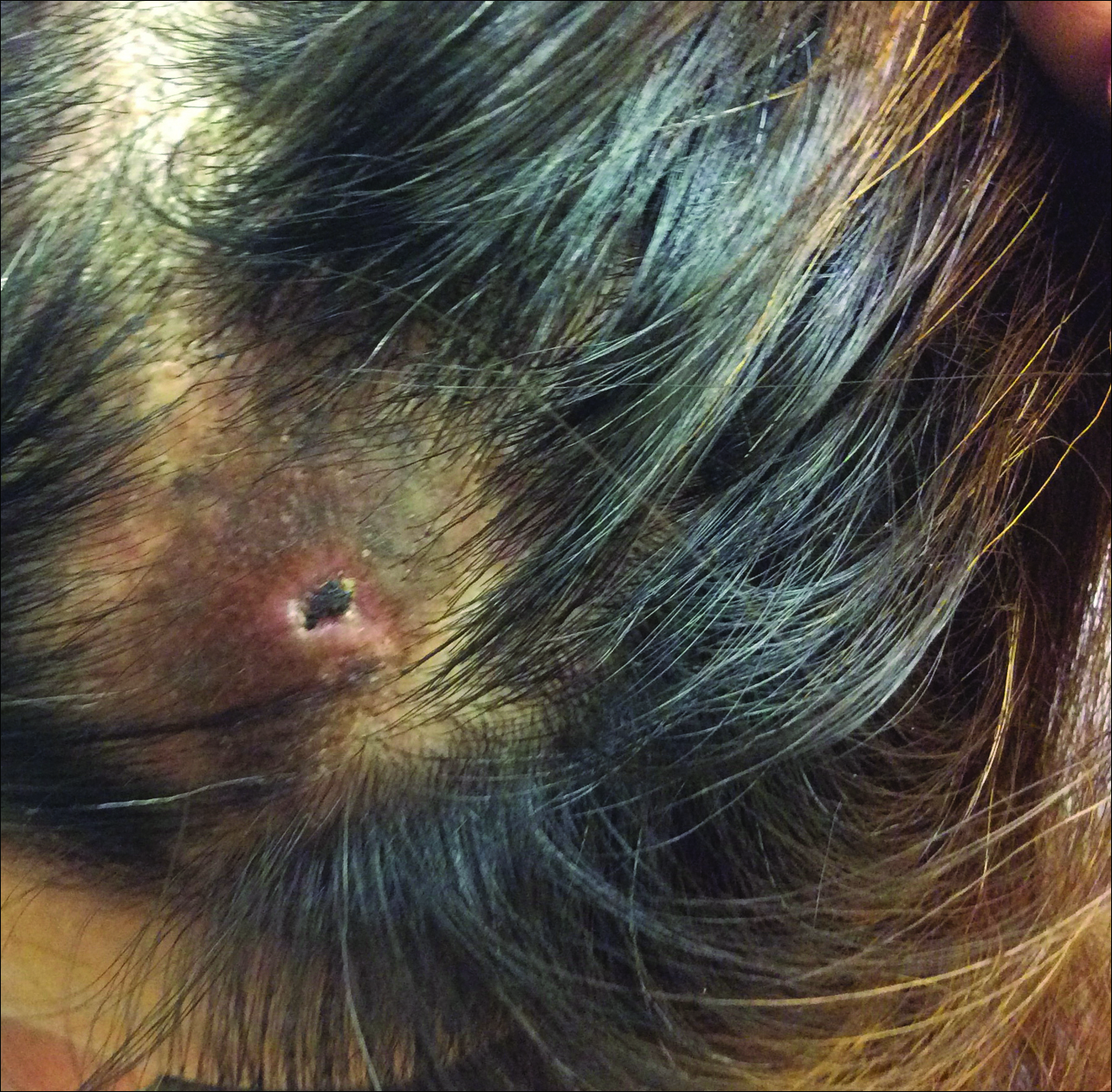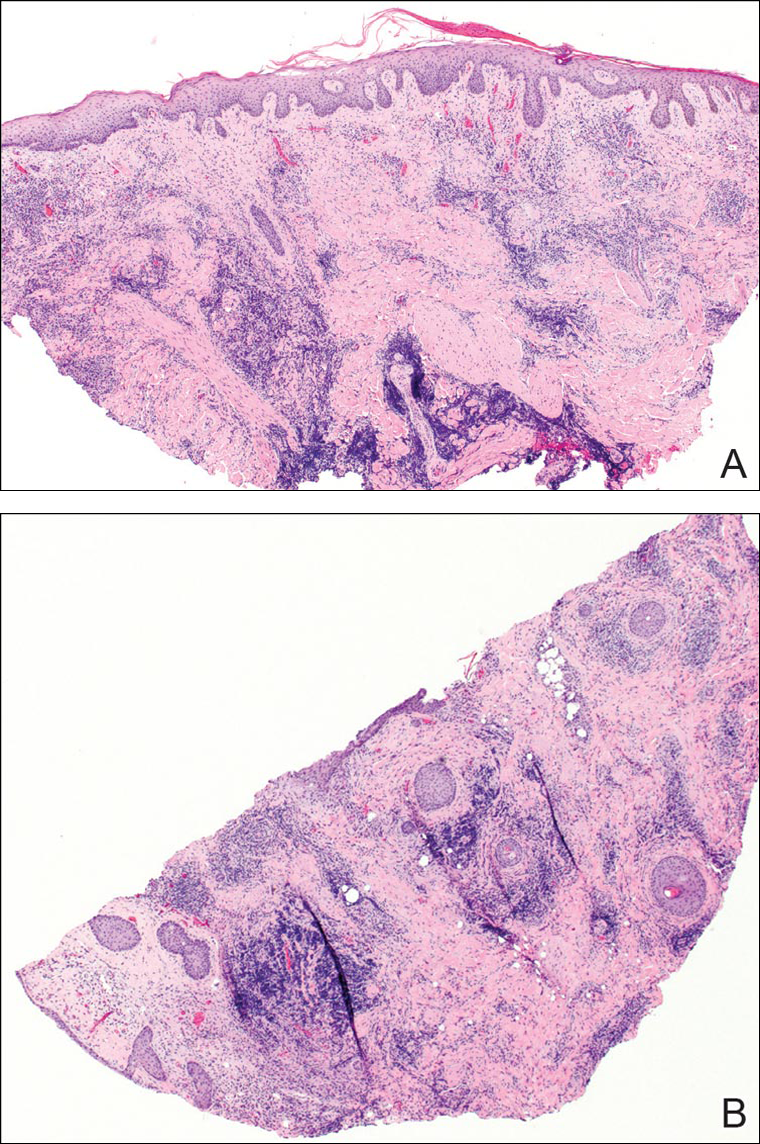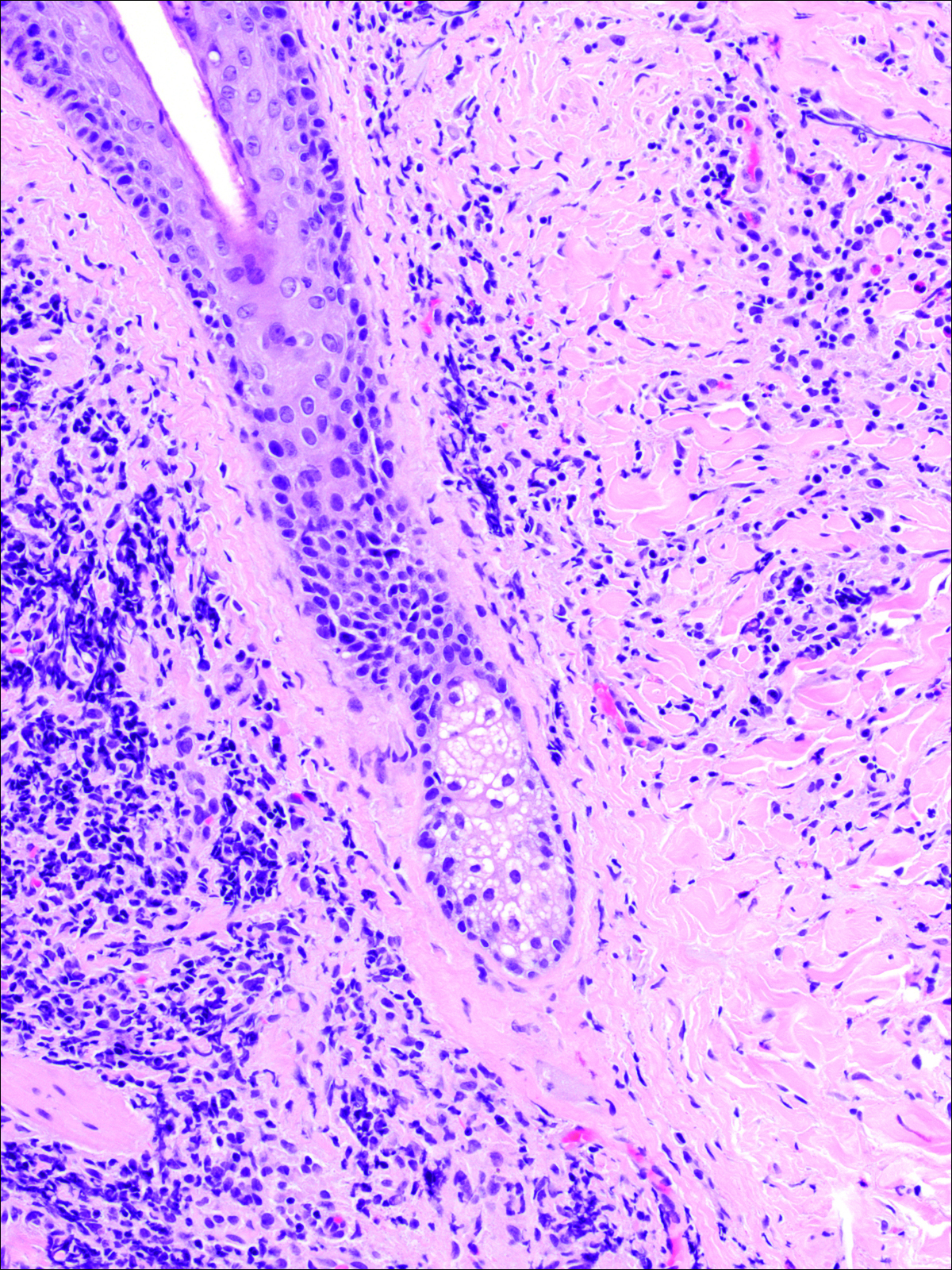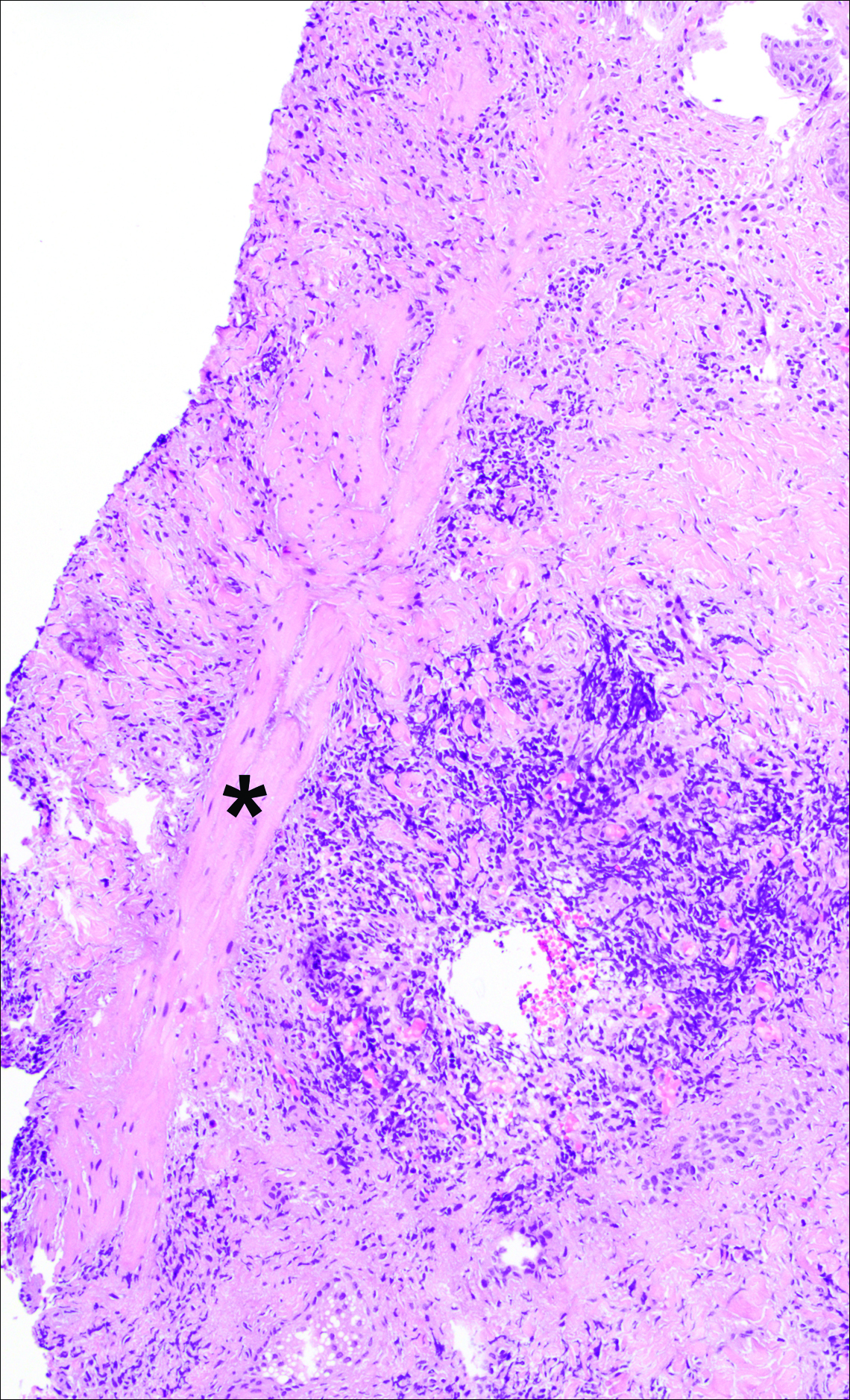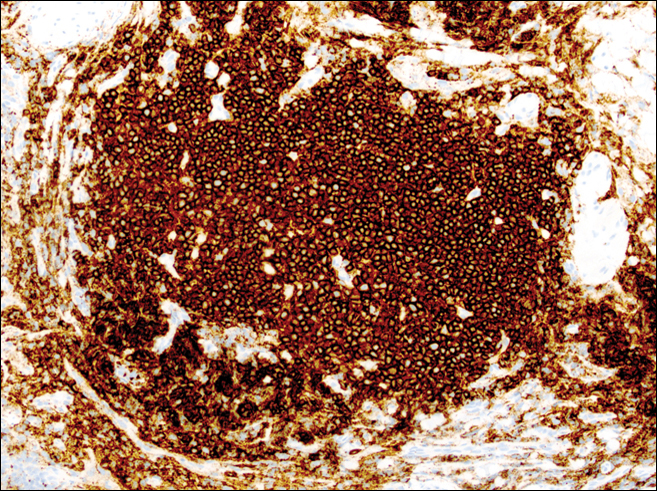Case Report
A 44-year-old woman presented with a localized patch of hair loss on the frontal scalp of several month’s duration. She had been bitten by a tick at this site during the summer. Two months later a primary care provider prescribed triamcinolone cream because of intense itching at the bite site. The patient returned to her primary care provider 2 weeks later due to persistent itching, hyperpigmentation, and hair loss. At that time, the clinician probed the central portion of the lesion because of a concern for retained tick parts. A few weeks later, a dermatologist evaluated the patient and found a roughly circular zone of alopecia measuring approximately 5 cm in diameter that was just posterior to the left frontal hairline (Figure 1). In the center of the plaque there was a small eschar surrounded by a zone of hyperpigmentation, mild induration, and almost complete loss of terminal hairs. At the periphery of the lesion, hair density gradually increased and skin pigmentation normalized.
A punch biopsy was obtained from an indurated area of hyperpigmentation adjacent to the eschar. Both vertical and horizontal sections were obtained, revealing a relatively normal epidermis, a marked decrease in follicular structures with loss of sebaceous glands, and dense perifollicular lymphocytic inflammation with a few scattered eosinophils (Figures 2 and 3).
Historical Perspective
Tick bite alopecia was first described in the French literature in 19211 and in the English-language literature in 1955.2 A few additional cases were subsequently reported.3-5 In 2008, Castelli et al6 described the histologic and immunohistochemical features of 25 tick bite cases, a few of which resulted in alopecia. Other than these reports, little original information has been written about tick bite alopecia.


